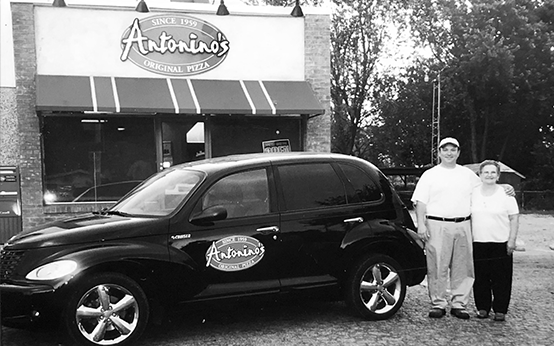A sincere apology is appropriate when you’ve hurt or disappointed someone, either intentionally or unintentionally, and you genuinely want to make amends. You recognize that your actions have damaged the relationship, and you humbly want to acknowledge your wrongdoing. An authentic apology can liberate you and initiate the process of reconciliation and repair in your relationship, paving the way for a fresh start. Inadequate apologies though can foster resentment, potentially escalating to emotional abuse. This article will explore the importance of apologies and how to deliver one.
If you read my last article on the topic of ‘forgiveness’, I wrote that true repentance involves a behavioral change, not just empty words. Both the person who caused harm and the person who was harmed can experience healing through a genuine apology and sincere remorse. While receiving an apology can bring a sense of closure, accepting it doesn’t obligate you to maintain the relationship. Choosing to keep someone in your life without genuine repentance could lead to repeated offenses and further harm.
The effectiveness of an apology lies in its delivery.
A genuine apology has the power to resolve conflict and eliminate resentment, unlike apologies that are perceived as appeasing, patronizing, or dismissive, which can often be mistaken for true apologies. Inauthentic apologies can leave a person feeling unheard and unacknowledged. They can lack trustworthiness and can feel disingenuous. The ability to apologize effectively can lead to a stronger, more resilient relationship, which is a key factor in long-term relationship satisfaction.
These days, we tend to be so psychologically sophisticated. We believe that explaining the psychological reasons behind our hurtful actions is enough to mend fences. This may sound like, “my father was impatient with me as a child, that’s why I…”. However, true reconciliation requires a deeper understanding. It involves fully acknowledging the consequences of our choices, demonstrating genuine empathy, and conveying a sincere understanding of how our actions affected the other person.
Taking responsibility for one’s actions is a humbling experience. It requires acknowledging the harm caused to all parties involved and taking steps to change one’s behavior. A true apology requires humility. It requires us to let go of the need to be right in the situation. Ask yourself, would I rather be right or loved?’

The anatomy of an effective apology
An authentic apology works best if it includes these three basic steps:
(1) Allow the hurt person to share how the experience made them feel; To truly understand the impact of your actions, start by asking how the experience affected them and listen with genuine curiosity. Allow yourself to feel their pain; it may be heartbreaking, but vulnerability fosters strength. Approach the conversation with humility, focusing on healing and reconnection, rather than explaining, justifying, or reacting.
(2) Acknowledge their pain with a statement of regret for what happened; After you have given them the space to share how the experience affected them, you may affirm by saying something like, ‘I know that way of being cost our relationship and that deeply saddens me. I can see how selfish that was of me and can also see how that tore you up. I want you to know I am really grieved by my own behavior, and I really get it’.
(3) A clear ‘I’m sorry’ statement and what they can expect from you; Next you let them know you are sorry by proclaiming something like, ‘Going forward, what you can count on me for is to always take your feelings into consideration, to act maturely by containing my actions if they are not kind, and to think holistically rather than selfishly. I am sorry for the pain I caused you. It took this experience to wake me up. I value our relationship and will avoid causing any unnecessary pain in the future’.
Once you have apologized, give the other person time to process your words. When asking for forgiveness in an apology, it is important to consider your motivation. Asking for forgiveness to alleviate your guilt can be unfair to the person you hurt. It places a burden on them to forgive before they’re ready, while they may still be experiencing pain and distrust. Prioritizing compassion over forgiveness means focusing on the well-being of the other person and allowing them to forgive when they’re comfortable.
Reconciliation is not submission
You will find it impossible to apologize sincerely or adequately if you see it as a submission. A sincere apology is never submission. In fact, it is one of the more beautiful forms of interactions: reconciliation. ‘Our connection is important to me: you’re important to me. I’m sorry that my behavior hurt you and broke our connection’. The primary purpose of an apology is to restore an eventual (not necessarily immediate) connection. It is never to defend your ego.

Ineffective Apologies…Don’t Do This!
People often react to complaints by defending themselves, countering with their own complaints, or explaining their psychology. However, if you want to make amends, it’s important to avoid these reactions and instead focus on truly understanding the other person’s perspective. Listen with curiosity and a genuine desire to reconcile, even if it’s tempting to explain your own position.
10 Ways to Ruin an Apology:
- Put a BUT in there: ‘I’m sorry BUT, you do the same thing to me’.
- Apologize but make sure it’s negated with some blame: ‘I’m sorry but I wouldn’t have done that if you had just listened to me’.
- Remind them that they are being too sensitive: ‘I mean geez, I’m sorry but I didn’t know you were offended so easily.”
- Shame spiral: ‘Okay, I’m sorry, I’m such a terrible mother’ or ‘sorry I guess I can’t do anything right’.
- Be really vague: ‘I’m sorry for whatever I did”. That will definitely make them feel better!
- Focus on your intent versus your impact. Remember, if it wasn’t your intent to hurt them, they shouldn’t feel hurt. ‘I’m sorry, it wasn’t my intention to make you feel bad. I’m just giving you my advice, so you don’t do anything stupid’.
- Act like them asking for an apology is crazy: ‘Can’t we just put this in the past?’ Sure absolutely, why repair when we can just sweep it under the rug?
- Invalidate: ‘Hey, I’m sorry but you’re making a really big deal about nothing.’
- Apologize really quickly without even understanding their perspective. ‘Okay, okay, I’m sorry!’. You don’t need to show any curiosity or remorse, just say, ‘I’m sorry!’.
- Say, ‘Well I’m sorry you feel that way’ and make sure it’s really condescending…that’ll smooth things over!
Remember real apologies have curiosity, understanding, validation, accountability, and followed with actual change in behavior, nothing else is not going to cut it. Failure to apologize, or worse, giving an inadequate apology can be a precursor to emotional abuse. After 20 years of working in this field, I’m convinced that most emotional abuse has roots in an inability to apologize adequately for what starts out as inadvertent insensitivity.
If you receive an apology, don’t see it as an opportunity for retaliation or revenge. The surest way to discourage apology is to criticize or punish someone for doing it. If your partner’s apology seems insufficient, acknowledge the repair attempt, then state what more you need to feel safe.
Satisfying apologies are different for different people. An acceptable apology for you might not work for your partner and vice versa. Tell your partner what you need to feel reassured that the hurtful behavior is unlikely to recur.






